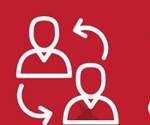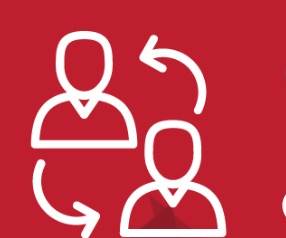New Series: A People+People Plan to Win the War on Talent
It’s no secret that it’s an employees’ market and companies of all sizes are struggling to attract, engage, and retain staff. Modernizing your talent strategy is key.
“Employee turnover costs anywhere from 16% to 213% of that employee’s annual salary, depending on the position,” PeopleKeep reports. Manufacturers are faced with the dual challenges of finding both skilled and unskilled labor. So, what are some actionable steps that will contribute to both employee attraction and retention?
Culture Is the Foundation of Winning the War for Talent, and You Can’t Fake It
It’s not just millennials. Everyone wants to work for a company that is committed to building a healthy culture. Assuming your compensation, benefits packages and job requirements are competitive, culture has the potential to significantly boost both your attraction and retention efforts. With employees willing to change employers for less than a dollar increase an hour, a strong culture can be the differentiator in the manufacturing sector that retains top talent.
“Employees’ overall ratings of their company’s qualities — like collaboration, work environment, and mission and value alignment — are 20% higher at companies with strong cultures,” CultureIQ reports.
Leaders that institutionalize their culture by establishing a mission, vision, values, purpose and brand story are a step ahead. While many organizations feel these are implied, documentation sets expectations and serves as a guidepost. If you currently don’t have culture statements, include your entire team in their development - people are more likely to uphold what they help create.
Once developed, how do you pull these culture statements through day-to-day? Leadership alignment at the top, which is critical to success, is a journey. I often liken it to working out - it is a muscle that needs to be continually flexed to build strength. There is a real time and financial investment, but the ROI of high employee retention is worth it.
Training and Continuing Development Foster an Engaged Workforce
Continuous training also helps build a strong culture that promotes employee engagement. Communication is a common challenge - training in Emotional Intelligence (EI) can help. Education in understanding different communication styles should be part of onboarding as well as part of continuing development. This can be especially helpful for supervisors that have come up through the ranks from the shop floor and may not have had formal professional training.
“Businesses with a strong learning culture enjoy employee engagement and retention rates around 30-50% higher than those that don’t,” Robert Half says.
Acknowledgment and recognition from both leadership and peers are also essential. Offer “Snaps” to acknowledge a job well done, which is an in-the-moment form of effortless recognition at meetings that is truly authentic. This simple act can also transform into company-wide “Snaps” emails from anyone who wants to share kudos to a fellow team member.
Training in financial literacy can also foster employee engagement. Play the Great Game of Business, an Open Book Management methodology, where every employee owns a line item on the balance sheet. This philosophy was developed specifically for manufacturers to help increase profitability. True engagement occurs when every person understands their impact on the bottom line.
Marketing for Recruitment - Tell Your Story to Attract Candidates, Not Just Customers
Storytelling is now table stakes in any user experience. Your company’s story should highlight your purpose and use your culture as a differentiator for attracting talent. Other ideas to pull storytelling through to all aspects of the employee and candidate experience are to brand your “perks,” spice up your job descriptions, and use video to showcase culture and employee testimonials.
Your digital footprint also helps tell your story. Update and maintain your Glassdoor profile; job seekers are used to an “Amazon experience,” and are looking for reviews and a polished digital presence. Add recruitment to your social media strategy and encourage individual employees to share corporate content to their own networks, which likely include potential candidates.
Think differently about where to find unskilled labor. Connect with the next generation of talent and work to change their perception of the manufacturing industry. Consider internship and in-house apprenticeship programs, and marketing directly to schools, trade programs, and veterans as well as to other industries that have transferable skills.
Update your Brand Image
Prospective employees will make snap judgments based on appearances. Let’s talk basics - do your logo, website, and marketing materials look like you still listen to 80s hair bands? Companies with great cultures and opportunities often get overlooked because their image does not represent their brand essence. Pull your brand image through to the paint and wall art on the shop floor. Display your culture statements where everyone can see them. Even brand your uniforms! There is a psychological impact of living and breathing your brand!
Check out how Bales Metal Surface Solutions, brings their unique brand into the day-to-day of running their business.
“Our bright brand colors can be found throughout our entire shop. Our tagline reflects our personality and the lighthearted environment we maintain. Our brand means something to Sara (Vice President) and me, and we convey that message to our employees and customers,” Stacey Bales, President of Bales Metal Surface Solutions says.
Invest in Technology - Extend the Capabilities of Your HR Department
The low hanging fruit is to have a robust careers page on your website! Applicants want to see what jobs are available and apply easily.
For the rest of your HR Department, determine what tasks could be done more efficiently by software. Consider using Human Resources Information Systems (HRIS), which combines several systems for easy human resource management, business processes, and data. This can be integrated with your Careers Page to allow for a consistent candidate-to-employee experience.
“42% of organizations are restructuring their HR operations or revising their strategies to leverage digital tools,” Randstad reports.
Other platforms have also entered the market to make people management easier. Payscale provides salary, benefits, and compensation data to make sure your pay is fair and aligned with your values. It is also helpful to survey your employees or have some sort of forum for them to share feedback. Don't guess about what your employees value as perks or recognition. Ask them! Employee satisfaction software, such as Emplify, allows easy data collection. This is the first step to addressing employee concerns and instills confidence that everyone’s voice is being heard.
About the Author
Julie Poulos is the Vice President of Red Caffeine, a growth consultancy, that uses +strategy, +branding, +marketing, and +technology to solve the critical business challenges of brand awareness, lead generation, sales enablement, digital transformation, and employer branding.
Related Content
Line Width vs. Depth Ratio in Laser Engraving
A laser does not produce 90-degree sidewalls. It requires a certain amount of draft in order to produce the required pattern.
Read MoreMachining Center Spindles: What You Need to Know
Why and how to research spindle technology before purchasing a machining center.
Read MoreRevisiting Some Hot Runner Fundamentals
What exactly does a hot runner do? If you’ve been in the injection molding industry for any length of time, you might think the answer is obvious, but it is not.
Read MoreIt Starts With the Part: A Plastic Part Checklist Ensures Good Mold Design
All successful mold build projects start with examining the part to be molded to ensure it is moldable and will meet the customers' production objectives.
Read MoreRead Next
New Series: A People+People Plan to Accelerate Growth
Employees and customers are the two critical factors to successfully growing. A People+People Plan is your roadmap to keeping a healthy pipeline of both.
Read MoreNew Series: A People+People Plan
No matter the size or industry, companies need a strategic roadmap to achieve their growth goals. A People+People Plan is the foundation and activation strategy for scaling your organization by attracting, engaging and retaining both clients and talent. It empowers your sales, marketing, and HR departments to align on processes, tactics and goals to achieve meaningful outcomes and long-term sustainability.
Read MoreAre You a Moldmaker Considering 3D Printing? Consider the 3D Printing Workshop at NPE2024
Presentations will cover 3D printing for mold tooling, material innovation, product development, bridge production and full-scale, high-volume additive manufacturing.
Read More










.jpg;maxWidth=300;quality=90)










